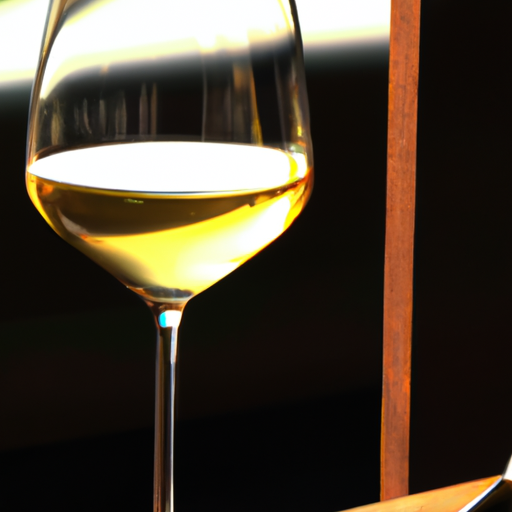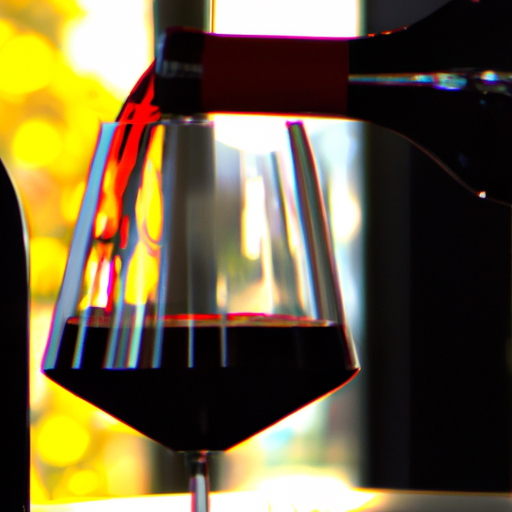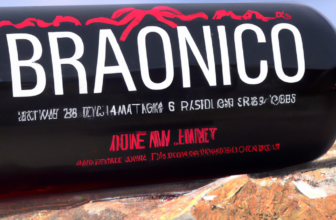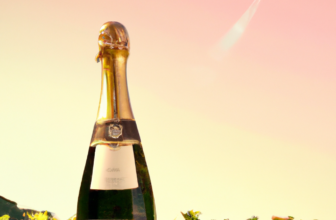
The Benefits of Aging: Exploring the Optimal Time to Drink Aged Red Wines
The Benefits of Aging: Exploring the Optimal Time to Drink Aged Red Wines
When it comes to wine, many people are familiar with the concept of aging. It is widely known that certain wines improve with time, developing complex flavors and aromas that cannot be achieved in their youth. This process, known as aging, is particularly beneficial for red wines. In this article, we will explore the optimal time to drink aged red wines and the benefits that come with it.
Aging red wines is a practice that has been followed for centuries. It involves storing the wine in a controlled environment, allowing it to mature and develop over time. The optimal time to drink aged red wines varies depending on the type and style of the wine. Generally, red wines with high tannins and acidity benefit the most from aging.
One of the primary benefits of aging red wines is the development of complex flavors. As the wine ages, it undergoes a series of chemical reactions that result in the formation of new compounds. These compounds contribute to the wine’s flavor profile, adding layers of complexity and depth. Aged red wines often exhibit notes of dried fruits, leather, tobacco, and spices, which are not present in younger wines.
Another advantage of aging red wines is the softening of tannins. Tannins are naturally occurring compounds found in grape skins, seeds, and stems. In young red wines, tannins can be quite harsh and astringent, causing a drying sensation in the mouth. However, with time, these tannins polymerize and become less aggressive, resulting in a smoother and more balanced wine. This process is particularly beneficial for red wines with high tannin levels, such as Cabernet Sauvignon and Nebbiolo.
In addition to flavor development and tannin softening, aging red wines also allows for the integration of different components. When a wine is young, its various elements, such as fruit, acidity, and oak, may not be fully harmonized. However, as the wine ages, these components blend together, creating a seamless and well-balanced wine. This integration enhances the overall drinking experience, making aged red wines a true delight for the senses.
It is important to note that not all red wines are suitable for aging. Light-bodied and fruity wines, such as Beaujolais Nouveau, are meant to be consumed within a year or two of their release. These wines do not possess the necessary structure and tannins to benefit from aging. On the other hand, full-bodied and structured wines, such as Bordeaux and Barolo, can age for decades, reaching their peak after several years in the cellar.
In conclusion, the optimal time to drink aged red wines depends on the type and style of the wine. Aging red wines allows for the development of complex flavors, the softening of tannins, and the integration of different components. It is a process that requires patience and careful storage, but the rewards are well worth it. So, the next time you come across a bottle of aged red wine, take a moment to appreciate the craftsmanship and enjoy the unique experience it offers.
Unlocking the Potential: Understanding the Optimal Maturity for White Wines

White wines are a popular choice among wine enthusiasts, known for their refreshing and crisp flavors. However, what many people may not realize is that white wines, just like red wines, have an optimal maturity that can greatly enhance their taste and complexity. Understanding the optimal maturity for white wines is essential for unlocking their full potential and enjoying them at their best.
The optimal maturity of white wines can vary depending on the type and style of the wine. Generally, white wines are classified into two categories: unoaked and oaked. Unoaked white wines, such as Sauvignon Blanc and Pinot Grigio, are typically meant to be consumed when they are young and fresh. These wines are known for their vibrant acidity and fruity flavors, which are at their peak when the wine is young. Drinking unoaked white wines too late can result in a loss of their vibrant flavors and a decrease in their overall quality.
On the other hand, oaked white wines, such as Chardonnay and Viognier, benefit from aging and can develop more complex flavors and aromas over time. The oak aging process adds depth and richness to these wines, allowing them to evolve and mature gracefully. Oaked white wines often exhibit flavors of vanilla, butter, and toasted nuts, which become more pronounced as the wine ages. It is recommended to drink oaked white wines when they have reached their optimal maturity, usually between three to five years after the vintage. This allows the wine to develop its full potential and showcase its unique characteristics.
In addition to the type and style of white wine, the region in which it is produced can also influence its optimal maturity. For example, white wines from cool-climate regions, such as Germany and Austria, tend to have higher acidity and can benefit from aging. These wines often have a higher sugar content, which can balance out the acidity and create a harmonious flavor profile. On the other hand, white wines from warmer regions, such as California and Australia, are typically meant to be consumed when they are young and fresh. These wines have lower acidity and are known for their ripe fruit flavors, which are best enjoyed in their youth.
When it comes to unlocking the potential of white wines, proper storage is crucial. White wines should be stored in a cool, dark place, away from direct sunlight and extreme temperature fluctuations. This helps to preserve the wine’s freshness and prevent premature aging. It is also important to store white wines horizontally, to keep the cork moist and prevent it from drying out.
In conclusion, understanding the optimal maturity for white wines is essential for fully enjoying their flavors and complexity. Unoaked white wines are best consumed when they are young and fresh, while oaked white wines benefit from aging and can develop more complex flavors over time. The region in which the wine is produced can also influence its optimal maturity. By storing white wines properly and drinking them at their peak, wine enthusiasts can unlock the full potential of these refreshing and delightful wines.
From Bubbles to Brilliance: Discovering the Optimal Time to Enjoy Sparkling Wines
Sparkling wines are a delightful and effervescent addition to any celebration or special occasion. From the crisp and refreshing Prosecco to the luxurious and prestigious Champagne, these bubbly beverages have a unique charm that sets them apart from other types of wine. However, like all wines, sparkling wines also have an optimal time to be enjoyed, when they have reached the perfect maturity to showcase their full potential.
The aging process of sparkling wines is a delicate and intricate one. Unlike still wines, which can benefit from extended aging, sparkling wines are typically meant to be consumed while they are still young and vibrant. The primary reason for this is the presence of carbon dioxide, which gives sparkling wines their signature bubbles. Over time, the carbon dioxide can dissipate, resulting in a less effervescent and lively wine.
That being said, there are certain types of sparkling wines that can benefit from a few years of aging. Vintage Champagnes, for example, are made from grapes harvested in a specific year and are often aged for several years before release. This extended aging allows the flavors and aromas to develop and integrate, resulting in a more complex and nuanced wine. Vintage Champagnes are typically released when they are already at their optimal maturity, so there is no need for further aging.
On the other hand, non-vintage Champagnes and other sparkling wines are generally meant to be enjoyed within a year or two of release. These wines are made from a blend of grapes from different years, and their primary focus is on freshness and fruitiness. Aging them for too long can cause the flavors to fade and the bubbles to diminish, resulting in a less enjoyable drinking experience.
When it comes to other types of sparkling wines, such as Prosecco and Cava, the general rule of thumb is to consume them within a year of purchase. These wines are made using a different method than Champagne, known as the Charmat method, which results in a lighter and fruitier style. The primary appeal of these wines lies in their youthful and vibrant character, and aging them for too long can cause them to lose their freshness and vitality.
Of course, personal preference also plays a role in determining when to drink sparkling wines. Some people enjoy the youthful and lively nature of a recently released bottle, while others prefer the more developed and complex flavors that come with aging. Ultimately, it is up to the individual to decide when they feel a sparkling wine has reached its optimal maturity.
In conclusion, the optimal time to enjoy sparkling wines varies depending on the type and style of the wine. Vintage Champagnes can benefit from several years of aging, while non-vintage Champagnes and other sparkling wines are best consumed within a year or two of release. Prosecco and Cava, with their lighter and fruitier style, are meant to be enjoyed while they are still young and vibrant. However, personal preference should also be taken into account, as some individuals may prefer the flavors and aromas that come with extended aging. Regardless of when they are consumed, sparkling wines are sure to add a touch of brilliance to any occasion.






